#d1cacc Color Information
In a RGB color space, hex #d1cacc is composed of 82% red, 79.2% green and 80% blue. Whereas in a CMYK color space, it is composed of 0% cyan, 3.3% magenta, 2.4% yellow and 18% black. It has a hue angle of 342.9 degrees, a saturation of 7.1% and a lightness of 80.6%. #d1cacc color hex could be obtained by blending #ffffff with #a39599. Closest websafe color is: #cccccc.
-
- R 82
- G 79
- B 80
-
- C 0
- M 3
- Y 2
- K 18
● #d1cacc color description : Grayish pink.
#d1cacc Color Conversion
The hexadecimal color #d1cacc has RGB values of R:209, G:202, B:204 and CMYK values of C:0, M:0.03, Y:0.02, K:0.18. Its decimal value is 13748940.
| Hex triplet | d1cacc | #d1cacc |
|---|---|---|
| RGB Decimal | 209, 202, 204 | rgb(209,202,204) |
| RGB Percent | 82, 79.2, 80 | rgb(82%,79.2%,80%) |
| CMYK | 0, 3, 2, 18 | |
| HSL | 342.9°, 7.1, 80.6 | hsl(342.9,7.1%,80.6%) |
| HSV (or HSB) | 342.9°, 3.3, 82 | |
| Web Safe | cccccc | #cccccc |
| CIE-LAB | 81.923, 2.776, -0.14 |
|---|---|
| XYZ | 58.312, 60.156, 65.663 |
| xyY | 0.317, 0.327, 60.156 |
| CIE-LCH | 81.923, 2.779, 357.116 |
| CIE-LUV | 81.923, 3.883, -0.7 |
| Hunter-Lab | 77.56, -1.529, 4.097 |
| Binary | 11010001, 11001010, 11001100 |
Color Schemes with #d1cacc
Alternatives to #d1cacc
Below, you can see some colors close to #d1cacc. Having a set of related colors can be useful if you need an inspirational alternative to your original color choice.
#d1cacc Preview
This text has a font color of #d1cacc.
<span style="color:#d1cacc;">Text here</span>This paragraph has a background color of #d1cacc.
<p style="background-color:#d1cacc;">Content here</p>This element has a border color of #d1cacc.
<div style="border:1px solid #d1cacc;">Content here</div>.text {color:#d1cacc;}.background {background-color:#d1cacc;}.border {border:1px solid #d1cacc;}Shades and Tints of #d1cacc
A shade is achieved by adding black to any pure hue, while a tint is created by mixing white to any pure color. In this example, #0a0909 is the darkest color, while #ffffff is the lightest one.
-
#0a0909
#0a0909rgb(10,9,9) -
#151213
#151213rgb(21,18,19) -
#1f1b1c
#1f1b1crgb(31,27,28) -
#2a2426
#2a2426rgb(42,36,38) -
#342d2f
#342d2frgb(52,45,47) -
#3f3639
#3f3639rgb(63,54,57) -
#493f42
#493f42rgb(73,63,66) -
#54484c
#54484crgb(84,72,76) -
#5e5255
#5e5255rgb(94,82,85) -
#695b5f
#695b5frgb(105,91,95) -
#736468
#736468rgb(115,100,104) -
#7e6d72
#7e6d72rgb(126,109,114) -
#88767b
#88767brgb(136,118,123)
-
#918085
#918085rgb(145,128,133) -
#9a8b8f
#9a8b8frgb(154,139,143) -
#a39599
#a39599rgb(163,149,153) -
#ada0a4
#ada0a4rgb(173,160,164) -
#b6aaae
#b6aaaergb(182,170,174) -
#bfb5b8
#bfb5b8rgb(191,181,184) -
#c8bfc2
#c8bfc2rgb(200,191,194) -
#d1cacc
#d1caccrgb(209,202,204) -
#dad5d6
#dad5d6rgb(218,213,214) -
#e3dfe0
#e3dfe0rgb(227,223,224) -
#eceaea
#eceaeargb(236,234,234) -
#f5f4f4
#f5f4f4rgb(245,244,244) -
#ffffff
#ffffffrgb(255,255,255)
Tones of #d1cacc
A tone is produced by adding gray to any pure hue. In this case, #d1cacc is the less saturated color, while #ff9cb8 is the most saturated one.
-
#d1cacc
#d1caccrgb(209,202,204) -
#d5c6ca
#d5c6cargb(213,198,202) -
#d9c2c9
#d9c2c9rgb(217,194,201) -
#dcbfc7
#dcbfc7rgb(220,191,199) -
#e0bbc5
#e0bbc5rgb(224,187,197) -
#e4b7c4
#e4b7c4rgb(228,183,196) -
#e8b3c2
#e8b3c2rgb(232,179,194) -
#ecafc1
#ecafc1rgb(236,175,193) -
#efacbf
#efacbfrgb(239,172,191) -
#f3a8bd
#f3a8bdrgb(243,168,189) -
#f7a4bc
#f7a4bcrgb(247,164,188) -
#fba0ba
#fba0bargb(251,160,186) -
#ff9cb8
#ff9cb8rgb(255,156,184)
Color Blindness Simulator
Below, you can see how #d1cacc is perceived by people affected by a color vision deficiency. This can be useful if you need to ensure your color combinations are accessible to color-blind users.
